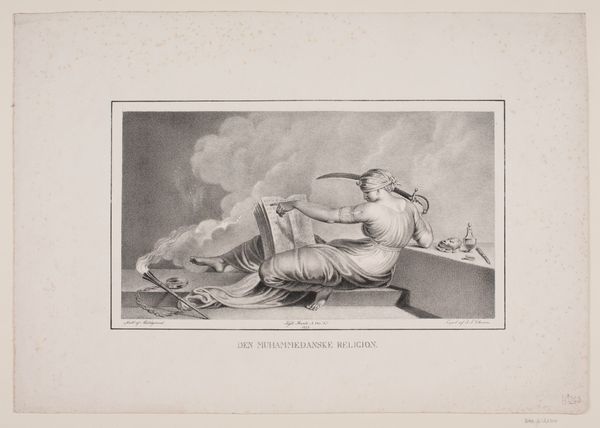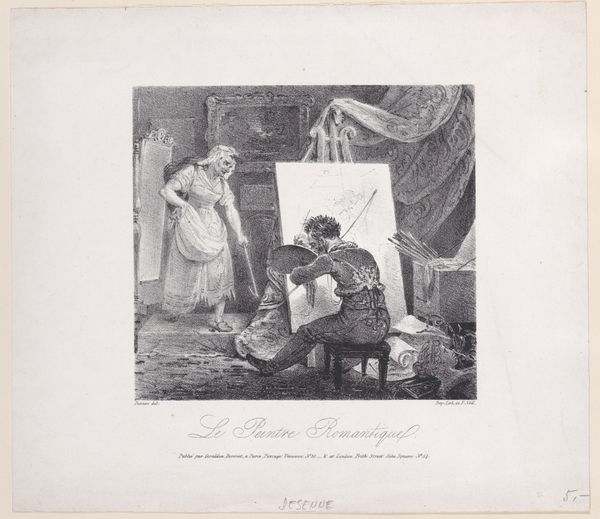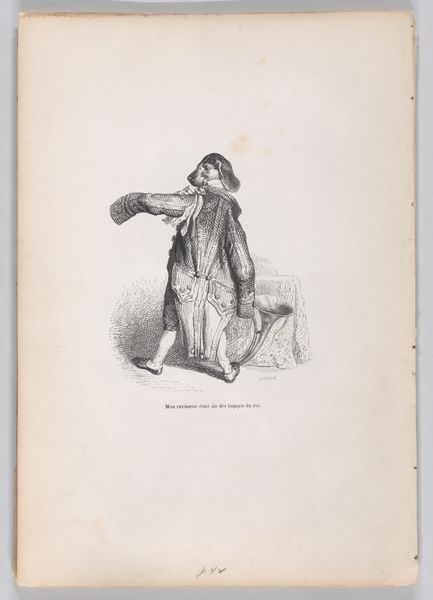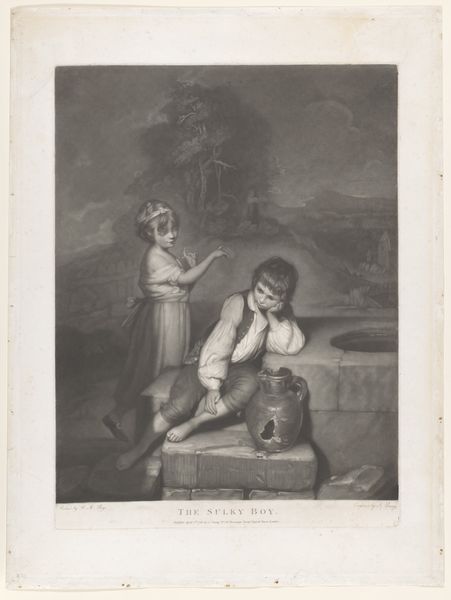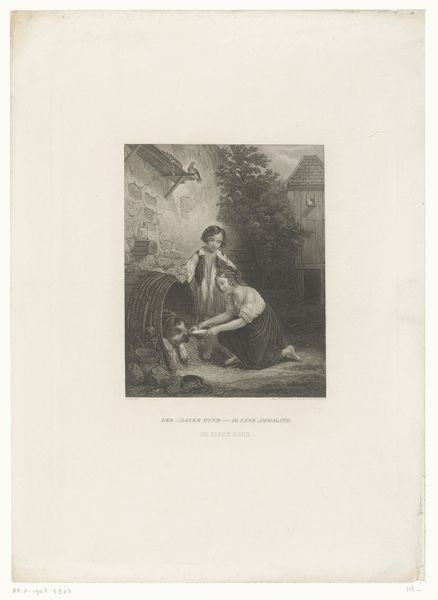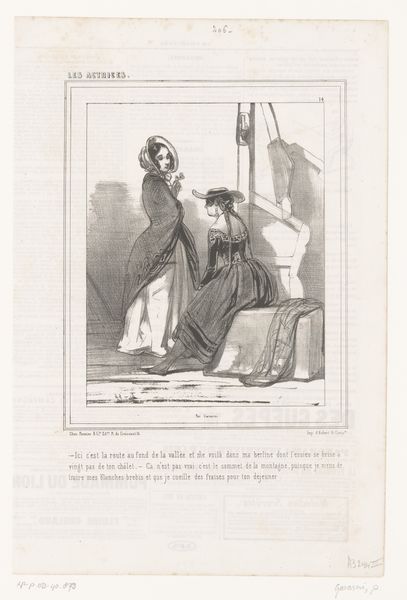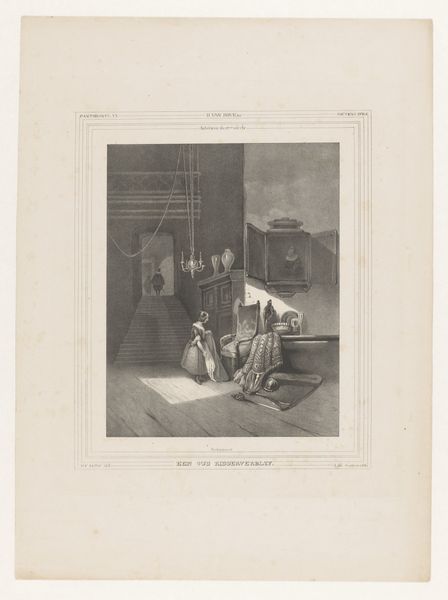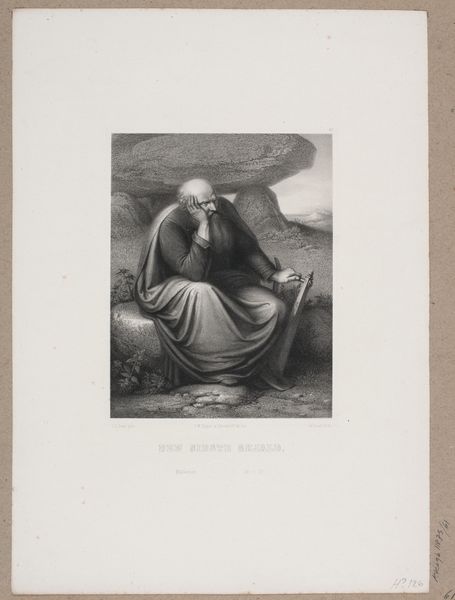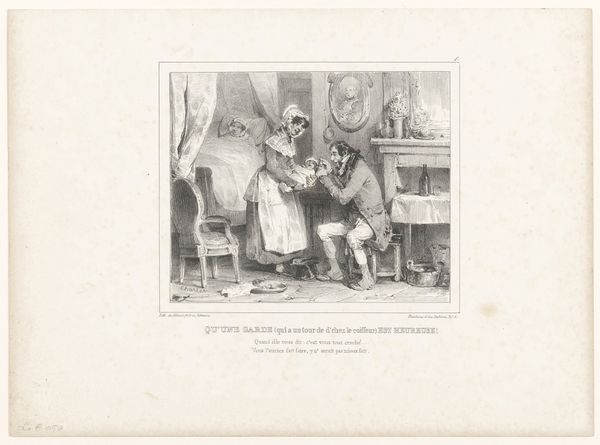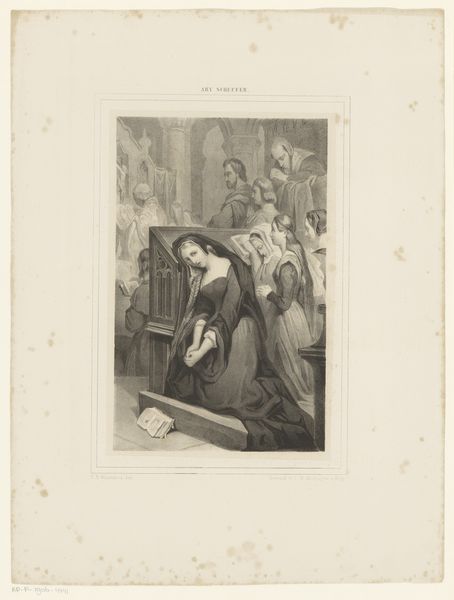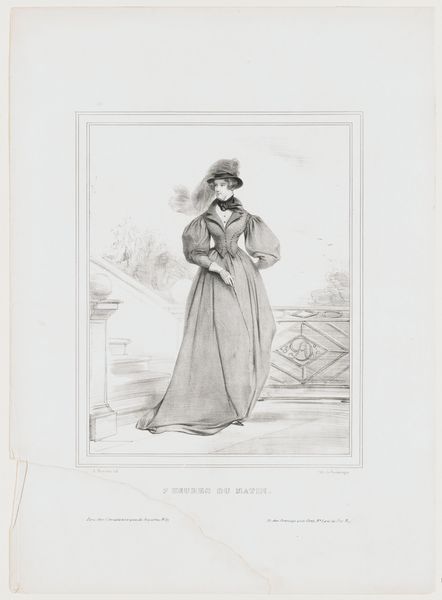
lithograph, print, graphite
#
narrative-art
#
lithograph
# print
#
figuration
#
romanticism
#
graphite
#
history-painting
#
graphite
Dimensions: 335 mm (height) x 460 mm (width) (bladmaal)
Editor: This is “Den kristelige religion,” or "The Christian Religion," a lithograph from 1825 by J.F. Clemens. It depicts a seated woman with a cross, seemingly casting religious objects into a fire. There’s a palpable sense of melancholy here. What are your initial thoughts on the piece? Curator: This piece speaks volumes about the turbulent religious and political climate of 19th-century Europe. While at first glance it presents as a straightforward religious image, it subtly critiques institutionalized religion. Notice how the woman casts religious paraphernalia into the flames. What could that represent in terms of shifting attitudes towards established faiths? Editor: Perhaps a rejection of dogma? The burning objects imply a move away from traditional practices. Curator: Precisely. Romanticism valued individual experience and emotion over established authority. This lithograph uses the visual language of Romanticism – the solitary figure, dramatic lighting, and symbolic imagery – to question the role of the Church in personal faith. Consider also the location, likely not a church, highlighting the shifting of religiosity from the institution into the individual sphere. Is it anti-religious? Editor: I’m not so sure it’s anti-religious; it seems more critical of organized religion. Like it's calling for a more personal, internalized faith. Curator: That’s a crucial distinction. Works like this were instrumental in shaping public discourse on religion. It challenges viewers to think about the social function of faith and the power dynamics inherent in religious institutions. Editor: It's fascinating how a single image can encapsulate such a complex dialogue about society and faith! Curator: Exactly. It reveals how art operates not in a vacuum, but as an active participant in the conversations shaping its time, inviting us to think about not just religion, but institutional power itself.
Comments
No comments
Be the first to comment and join the conversation on the ultimate creative platform.
